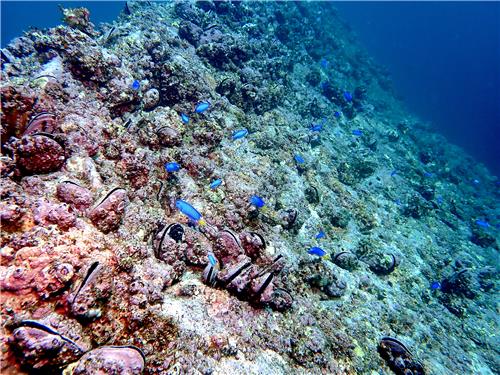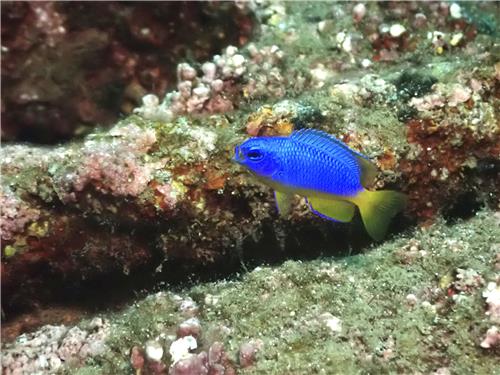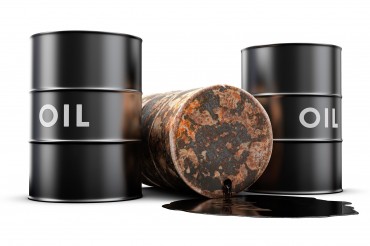SEOUL, Nov. 22 (Korea Bizwire) – The neon damselfish, a tropical species of damselfish once limited to the warm waters around Jeju Island, has recently been found in large numbers further north around Ulleungdo.
On Tuesday, the National Institute of Biological Resources (NIBR) disclosed that an ongoing investigation launched in 2021 had identified a total of 131 species in the coastal waters around Ulleungdo. When considering species with references or records, the overall count of coastal fish species near Ulleungdo reached 174 as of last month, marking a 20-species increase from last year.
Out of the 131 directly observed species, tropical and subtropical fish accounted for 49 and 27, respectively, constituting 58.5 percent of the total. The quantity of tropical and subtropical fish species surpassed that of temperate fish species (48 species, 36.9 percent) by 1.5 times.

A school of neon damselfish found near the coast of Ulleungdo Island (Image courtesy of the National Institute of Biological Resources)
The NIBR noted that at certain observation sites, more than 100 neon damselfish were recorded, signifying a more than tenfold increase compared to previous observations. NIBR officials stated, “The number of neon damselfish observed in the waters around Ulleungdo was approximately 50 in both 2022 and 2021. However, this year, the count of such species surged to 500 in some observed locations.”
The neon damselfish, a petite fish with a mature size of about 10 centimeters, forms schools in waters approximately 20 meters deep, rich in rocky features. It thrives in temperatures ranging from 16 to 31 degrees Celsius. Originally confined to the warm seas around Jeju Island, its habitat has now expanded to include Dokdo and Ulleungdo.
In April, the neon damselfish was designated as a climate change indicator species. In this year’s NIBR investigation, a diverse array of new subtropical species, including saw-edged perch, smokey chromis, white-tailed yellow chromis, and striptailed damselfish were discovered in the waters around Jeju.

A neon damselfish found near the coast of Ulleungdo Island (Image courtesy of the National Institute of Biological Resources)
The primary driver behind the transformation of Ulleungdo’s marine ecosystem is the rise in water temperatures. According to the National Fisheries Research and Development Institute, the surface water temperature around the Korean Peninsula from late August to early September this year reached 26 degrees Celsius, the highest since the commencement of satellite-based surface water temperature observations in 1990.
During this period, the surface water temperature of the East Sea stood at 25.8 degrees Celsius, more than two degrees higher than the average.
It’s not only this summer that sea temperatures have been elevated. The surface water temperature around the Korean Peninsula averaged 16.7 degrees Celsius between 2011 and 2020, significantly surpassing the 15.9 degrees Celsius recorded between 2001 and 2010.
M. H. Lee (mhlee@koreabizwire.com)






